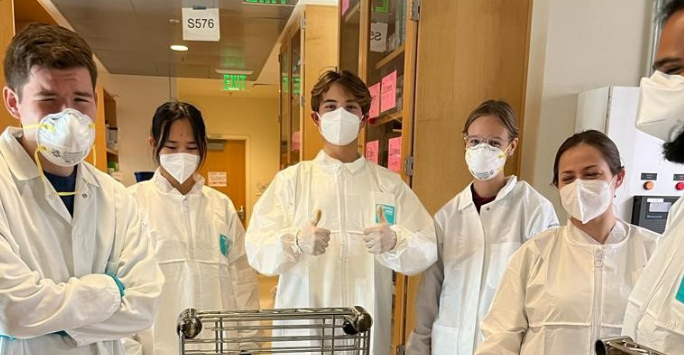
George Carter is a third year Microbiology student in the School of Life Sciences. Here he tells us about his experiences on a placement at the University of California San Francisco (UCSF), which have confirmed his desire to pursue a career in research.
Background
The integrated stress response (ISR) plays a pivotal role as a cellular defence mechanism in response to stresses such as hypoxia, as well as exposure to chemicals and viruses. The key mediator of the ISR is eIF2α, a translation factor, which can directly inhibit translation initiation depending on its phosphorylation status. This translation regulation is essential for halting the cell cycle and protein synthesis to save energy. This also functions as a defence mechanism against viral replication, though the ISR can also be hijacked by certain viruses. ISR activation can therefore affect mortality, viral RNA/DNA levels as well as cellular protein levels.
Project aims
We wanted to measure these three variables in Drosophila with an engineered ability / inability to trigger the ISR when infected with virus. We hoped to see trends in certain viruses that showed the ISR as a help / hindrance to Drosophila survival and viral replication. We aimed for interesting findings that could be explored further in the context of a specific virus or ISR activation pathway. We also aimed to find Drosophila tissues that show varying levels of ISR induction using six viruses.
My research
I began by cultivating Drosophila lines, initially a mutant and wildtype. The mutants did not express eIF2α; hence they couldn’t utilise the ISR. I carried out microinjections to infect the two lines, each with six viruses:
- Drosophila Neuro-Virus (DNV)
- Cricket Paralysis Virus (CrPV)
- Flock House Virus (FHV)
- Sindbis Virus (SIN)
- Drosophila C Virus (DCV)
- Vesicular Stomatitis Virus (VSV).
I recorded mortality at each day post-infection, and took samples on alternating days for later qPCR. I found that an undiscovered DNV significantly increased mortality in the mutants compared to the wildtypes, and CrPV caused the opposite to occur. In wildtypes infected with CrPV, viral RNA levels were high, suggesting there is effective replication that is causing increased mortality, rather than each CrPV unit having an increased detrimental effect in wildtypes. CrPV may be possibly hijacking the ISR to its advantage. However, mutants with DNV did not express increased viral RNA vs the respective wildtypes, suggesting an increased susceptibility to death for a given DNV load when ISR is absent.
We utilised the Gal4/UAS system to express fluorescent proteins in specific Drosophila tissues. This fluorescence was recorded with a luminometer, providing results for calculations that showed differential ISR induction levels. We found that FHV, DNV and DCV were highly expressed in most tissues, SIN was not significantly expressed, and VSV was only significantly expressed in the Fat body.
Outside the lab
Weekly meetings and journal clubs, as well as dry-lab work in the social area, allowed me to build some amazing friendships during my time. Within these friendships, we would plan weekend trips and go for dinners.
The amazing location of the placement accommodated life-long dream trips of mine, such as Yosemite and LA, as well as the opportunity to run the San Francisco marathon.
I was lucky enough to be invited on the UCSF annual retreat, for a two-night stay in a lovely vacation resort. This was an amazing networking opportunity, where I connected with many professors and graduate students, who provided invaluable knowledge and advice.
Future plans
Overall my stay really helped confirm my desire to attend graduate school in the States. The day-to-day excitement that this placement held, as well as the emotional investment into my project also consolidated my desire to pursue a career in research, whether at UCSF or elsewhere.
Advice for other students – why to do a placement
The career clarification and direction that this placement provided is invaluable and I would recommend a placement as a trial run for anyone interested in a specific career path. I would typically relax over summer, and return to academia rather unsatisfied with my use of time. However, I returned from the States with a great sense of fulfilment, with amazing connections and friendships formed, and with a huge boost to my knowledge base and skills inventory. Overall, it was a thoroughly beneficial and fun experience!